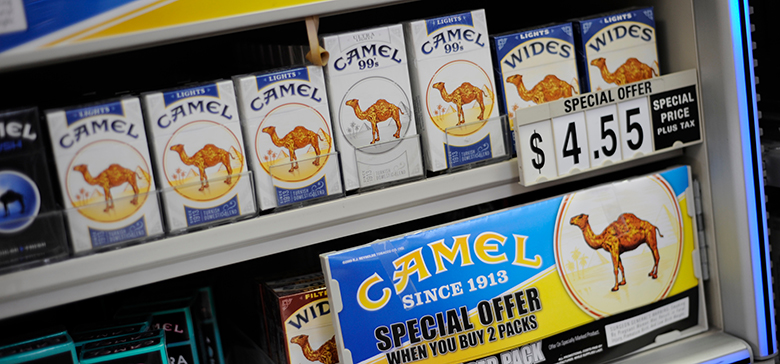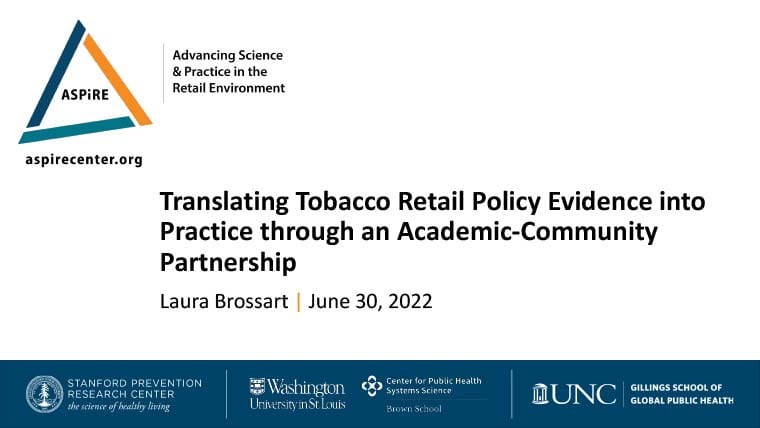ASPiRE

Overview
Washington University (CPHSS), University of North Carolina at Chapel Hill, and Stanford University are recipients of a 2018 five-year $11.6 million National Institutes of Health multi-institutional grant, Advancing Science & Practice in the Retail Environment (ASPiRE). The project’s goal is to build a strong scientific evidence base for effective policies in the retail environment to help reduce tobacco use, tobacco-related disparities, and the public health burden of tobacco, including cancer.
Results from three unique research projects will combine to advance the retail tobacco control evidence base. Led by Washington University researchers Douglas Luke and Ross Hammond, the Tobacco Town project uses agent-based modeling to study innovative policies in the retail setting and their impact in different types of communities, especially those with low-income and minority populations.
Methods or Strategies Used
In the Retailer Density and Disease project, researchers at UNC are mapping 275,000 tobacco retailers across the U.S. from 2000 to 2016 and explore the relationship between the density of these retailers and tobacco-related illness, like cancer.
The Big City Tobacco Control project led by Stanford seeks to understand how the tobacco retail environment in a city may impede efforts at quitting smoking. This study will further evaluate the benefits of local policies to regulate and limit retail availability of tobacco. Stanford researchers will survey a panel of 2,400 adult smokers 5 times over 30 months and will examine changes over time.
In addition to three distinct synergistic research projects, the ASPiRE Center has three shared resource cores. The Dissemination & Implementation core, housed at our Center, promotes integration across the three projects and enhances the efficient translation and reach of findings.
The ASPiRE group continues its “team science” approach, building on a strong, multidisciplinary 6-year collaboration that began in 2012 with funding from the National Cancer institute’s State & Community Tobacco Control Initiative to address important under-studied aspects of state and community tobacco control policy and media interventions.
Project Publications
Associations of tobacco retailer density and proximity with adult tobacco use behaviours and health outcomes: a meta-analysis
Lee JGL, Kong AY, Sewell KB, Golden SD, Combs TB, Ribisl KM, & Henriksen L. (2022). Tobacco Control.
Draining the tobacco swamps: Shaping the built environment to reduce tobacco retailer proximity to residents in 30 big US cities
Combs, T., Ornstein, J., Chaitan, V., Golden, S., Henriksen, L., & Luke, D. (2022) Health & Place.

Translating Tobacco Retail Policy Evidence into Practice through an Academic-CommunityPartnership
2022, Laura Brossart, National Conference on Tobacco or Health (NCTOH)
Tailoring dissemination of evidence to preferences of tobacco control partners: results from an academic-community partnership
McKay, V., Vogel, M., Combs, T., Brossart, L., Endrizal, A., Andersen, S., Poor, T., Mahoney, M., & Luke, D. (2022). Substance Abuse Treatment, Prevention, and Policy.

Tobacco Retailer Density and Proximity: What’s the difference and how to talk about it
2022, Todd Combs, CDC OSH National Tobacco Control Program Awardee Meeting